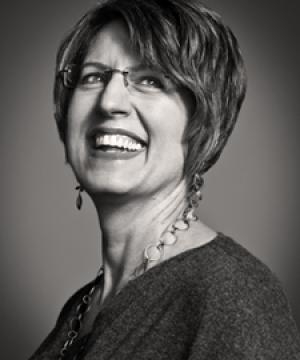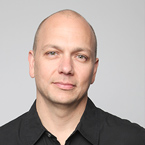
GREENBUILD 2012 San Francisco: A personal take.
by Mark English, AIA | Other Voices
“When I first visited the Greenbuild website to sign up, I became very excited: The prospect of spending three days in educational sessions at one of the world’s largest conferences dedicated to green buildings with building professionals from around the world sounded thrilling.” – Benjamin Todt
All of us at Mark English architects, and most of the rest of our colleagues, are involved in thinking about and implementing Green Building practices. Last week the Greenbuild Expo arrived in San Francisco, and several of our employees attended. One of them is Benjamin Todt, a German architectural intern. Germany is a leading proponent of Green design, and leads much of the world in Passivehaus design, net-zero design, solar and wind alternative energy sources. I thought it would be interesting to see the Expo through Ben’s eyes. The following are his observations:
“When I first visited the Greenbuild website to sign up, I became very excited: The prospect of spending three days in educational sessions at one of the world’s largest conferences dedicated to green buildings with building professionals from around the world sounded thrilling. Having just received my Bachelor’s degree I could not wait to learn more about the likes of cool towers, building envelope design and natural ventilation. At the time I registered for the sessions, some of the sessions about architecture specific topics were already full so I had to sign up for a few sessions that sounded less interesting like Austin’s sustainability measures and Tony Fadell’s talk about his beautiful but seemingly pointless attempt to redesign the thermostat.
Greenbuild itself then actually started out with a bang. Or more precisely with the opening plenary featuring Biz Stone, Co-Founder of Twitter, and Rick Fredrizzi, President of USGBC, among others. While the moderators of the event wanted to hear that Twitter caused recent political changes, Biz Stone replied in his relaxed manner that all it is really doing is facilitating communication and collaboration, not initiating any human needs. He then mentioned that eventually social media will lead to a smaller world in which it will be more appropriate to think of the world in terms of humanity as a whole instead of nations and countries. And as the world becomes more interconnected he thinks that marketing will shift to a new model where companies use the majority of the marketing budget to do good things in the world and use the rest of it to make sure that we all know about it. He then concluded by saying that people don’t care about “green” when they are oppressed or are starving to death. At this point I was not sure how this related to Greenbuild. But then Rick Fredrizzi made a similar point: While companies are a central part of the problem now, they have to become central part of the solution as well. In essence he said that the green movement can only be successful if it achieves market transformation in collaboration with the economy. His infectious energy and passion, paired with steadfast determination gave me the feeling that the American green movement was in good hands.
After this unexpectedly broad but energizing intro, I was looking forward to equally enthusiastic but much more precise and architecture specific presentations. The sessions that I had looked forward to the most, the ones that were supposed to deliver in depth, cutting-edge knowledge about topics that I had heard about a little in college, fell far short of this. Instead of learning how to exactly design a building envelope that can stand the extreme climate of Saudi Arabia, I was let down with many pretty renderings and a couple of undergraduate-level principles of shading. Instead of learning how to exactly design a building in San Francisco using natural ventilation, I was served with a teaspoon of information that I could have gained from simply visiting the building and looking at it. And instead of gaining any significant new insight into cool towers, the presenters decided to settle for a shallow report of their projects and show that they were unable to integrate the cool towers into the building design in an esthetically acceptable way. Making it an even less satisfying experience, the energy with which they all presented their, in essence truly applaudable, work was as low as the energy consumption of their buildings. Or lower.
In stark contrast to this, Lucia Athens, Chief Sustainable Officer of the city of Austin, gave a riveting talk that went far beyond the sustainability of a single building. Long before she started her work, Austin had dozens of stand-alone sustainability initiatives. But the problem was that the different organizations were not connected or didn’t even know about the existence of other organizations in Austin. So she decided to bundle all 180+ sustainability initiatives and created one recognizable logo. Calling it “rethink Austin for a bright green future” she puts her “holy trinity” of People (Equity), Planet (Environment) and Prosperity (Economy) front and center. With this approach she wants to tackle Austin’s extensive list of problems including huge population growth, poverty, obesity, lack of parks and poor transportation system among many others. She concluded with a set of guidelines, which she uses in her quest: “Build a frame”(start where you are, create a system), “Tell a story” (measure progress, celebrate success) and “Think big” (outside box, people matter, fun). Lucia’s idealism is infectious and she demonstrates on a daily basis how sustainability can go far beyond a city’s buildings.
Once Lucia has put people into homes, they can start to worry about their energy bills. And that is where Tony Fadell and his Nest thermostat come into play. I had heard of his product before but admittedly I had never truly understood its revolutionary quality. At first glance it actually is only a beautiful thermostat. You can install it and simply pretend it is like the other thermostat you used before. But Tony made a different experience: people actually start to engage with their thermostat. They start caring about it. The more people interact with it, the more it learns about the occupants of the building. It can set the right temperature considering the time of the day, weather, the occupant’s behavior and more. That helps you to save money by just using it as a regular thermostat. Tony thinks, and being a former Apple employee he should know, that the reason for its success is the fact that it is emotional which makes people want to engage with it. He sees it as a starting point for people to learn more about water, electricity and insulation. But what is truly spectacular about this product is a tiny green leaf that only appears when you set your temperature slightly below your usual comfort temperature. People want to see the green leaf, be rewarded, and that way they save energy and money. Just because of a few green pixels. Spectacular.
Eventually Greenbuild 2012 ended on a high and unexpected note. Very high. Very unexpected. It ended with Jane McGonigal. Jane McGonigal is the Director of Game Research and Development at the Institute for the Future. She said that the world spends 100 million hours every three weeks on playing Angry Birds. Why is that significant? Because it took 100 million hours to create Wikipedia. Wow. We could create something as complex as Wikipedia every three weeks by just not opening the app and being productive in a meaningful way instead. She pointed out how gamers are open to failure, fail constantly, try hard to eventually get the big reward, the epic win. Additionally, gamers are highly engaged in their games. Jane wants to find ways to bring those qualities of gamers into the real world to solve real world problems, Environmental problems, for example.
So what do I know now, after Greenbuild, that I didn’t know before? I don’t know much more about new, surprising ways to make a building “green”. Maybe that’s because I went to the wrong sessions or because there just isn’t that much more to learn about sustainable building techniques. It’s possible that we already know enough and all we need to do is implement it in both new and existing buildings. But that’s not something Greenbuild can do. That’s something only professionals can do in their job. What it did, though, was teaching me that much of the success of the green movement will depend on everyone else but the people attending Greenbuild. We already knew how important building, living, thinking green was. In many ways Greenbuild preached to the choir. And yet it also made room for people like Lucia Athens, Tony Fadell and Jane McGonigal who tackle the problems in a fresh, innovative way. It’s because of them that everyone else but the people attending Greenbuild can become part of the movement. For me, Greenbuild’s biggest accomplishments were to open my mind to the necessity of getting all the other people on board and introducing me to surprising new ways of how to do so.
Thank you, Greenbuild 2012.”
-Benjamin Todt










